
6 minute read
Create This Style: Jen Winters talks us through her unique take on the Essex Pompadour.
The Essex Pomp
Jen Winters, owner of Phoneypony Barbers and Tattoo in Chelmsford, Essex is a renowned, travelled barber who’s been in the industry for 17 years. She talks us through her unique take on the Essex Pompadour.
Ihave chosen this haircut as it’s a very popular style here in Essex. I call it the ‘Loosey Goosey’ aka The Essex Pomp. I love the style as it has evolved from the traditional Pompadour. I like to base all of my styles on classic cuts as I feel they are the best foundation for any style, and are a great start for barbers as they can then adapt them in line with modern barbering. This cut is timeless and would suit most gents who would like to keep some length. It’s simple to do but has a powerful finish.
Follow @phoneypony_barber
Equipment List
Wahl Seniors Guards 0.5,1,2,1.5,2 and 3 Wide-tooth Comb Normal Comb Matakki Dragons and Thinning Scissors KingBrown Texture Spray and Texture Powder
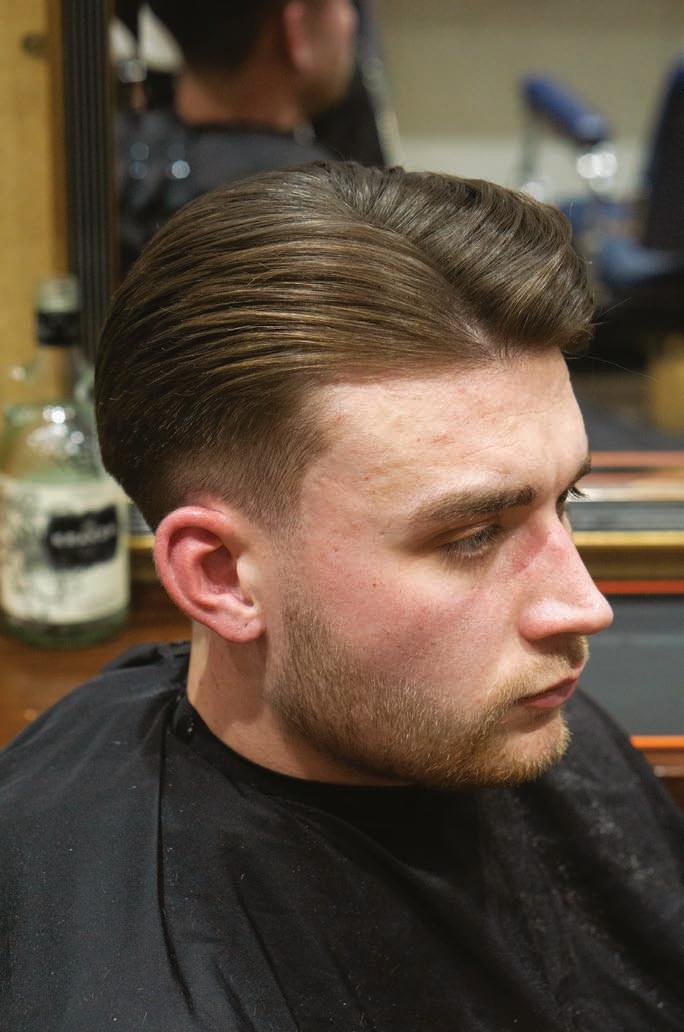
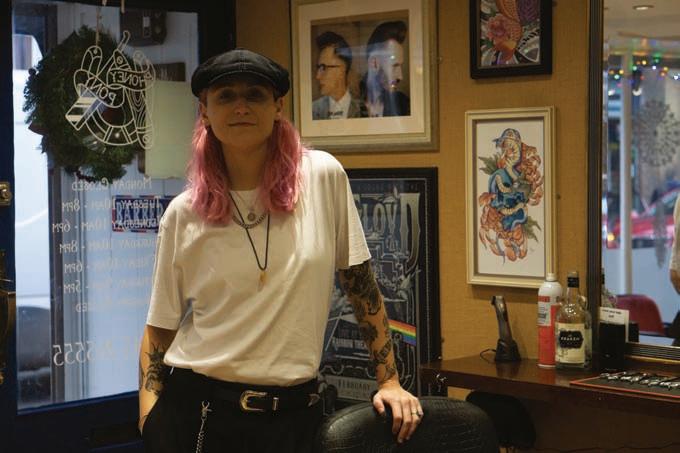
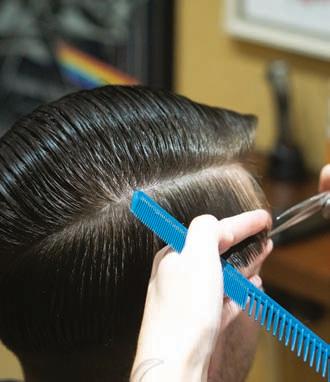
Step one
Wet down the hair and section from the recession area to the crown. There should be no fight in the hair and the section should be clean. Put your baseline in by clipper over comb or scissor over comb to a 3 guard. Keep the baseline against the widest point of the head. Make sure you keep the drop towards the back of the head so that there’s a good base over the occipital bone.
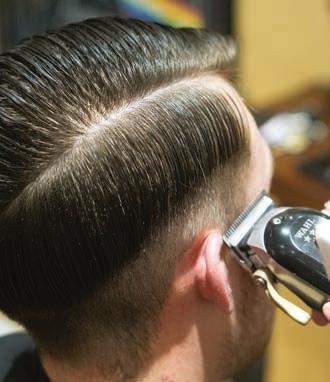
Step two
Remove the hair under the baseline with a 3 guard. Then, a 2 guard before finishing with a 1. Remember that you are working up to the baseline, not past it. Move on to doing a small zero taper to make the frame nice and polished. Refine the baseline and remove any desired weight. This will help with the softness and flow of the cut. Repeat on the other side.
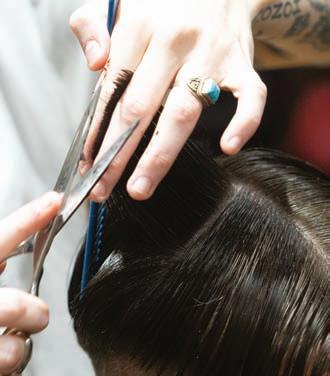

Step four
Work on one side first, elevating each section at a 45 degree angle and repeat on the other side. Then, go through the top at a 90 degree angle to connect both sides. Point cut the top to help soften and remove weight.
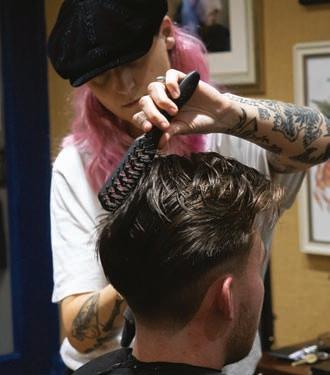
Step five
Use texture spray (I use KingBrown Texture spray) to give hold and control to the hairstyle. Blow-dry everything back and add some height into the front of the haircut to give some nice lift and movement. Use a vent brush to help give more volume. The hairdryer should be on a medium heat and medium setting to help give control over the styling. Blow-dry 90% of the hair as this gives you a chance to refine and remove hair that isn’t needed.
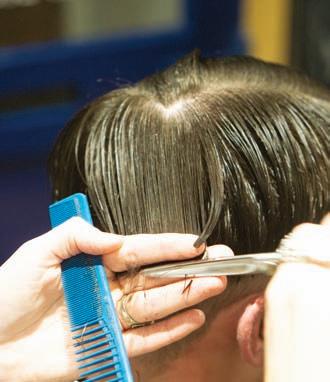
Step three
Part the hair down the middle, but allow the hair to sit naturally without any bend or fight. Starting with the crown area, over direct the back to the rear baseline to connect to the sides of the haircut. This should be done at a 45 degree angle on either side. Finish by taking the back at a 90 degree angle to connect both sides of the crown area.
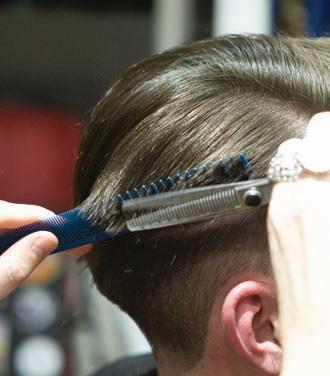
Step six
Do any last touches to the tapers front, back and line out. Go back in with the hairdryer on a low heat to help give hold and shine. Add some texture powder (I use Kingbrown Texture Powder) for a dry, natural finish.



The T Level Industry Placement


Development of the government’s new 1T Level Technical Qualifi cation in Hairdressing, Barbering and Beauty Therapy is now underway with delivery to commence across England in 2023.
The contract for this T Level was awarded to NCFE, who will work alongside its specialist partner VTCT, by the Institute for Apprenticeships and Technical Education (the Institute) in October 2021.
T Levels are high-quality, work-focused alternatives to A Levels for students aged 16-18. These new flagship Level 3 technical programmes span two years and will equip students with the skills, knowledge and behaviours they need to progress into skilled employment. One of the four key components that make up a T Level is the industry placement.
What is the industry placement?
The industry placement allows a student the opportunity to gain valuable work experience in a real world, business setting. These placements offer all students access to a meaningful experience and practical skills that can’t be gained in the classroom.
The duration of the work placement is a minimum of 315 hours (with no upper limit of time). This will be during normal industry working hours, even if it is outside the academic timetable, thus further promoting the real-life work environment for students.
Mike Taylor, Director at The Great British Barbering Academy shared: “I’m proud to be shaping the future of the barbering workforce with VTCT and NCFE. By lending my expertise to the development of T Levels, I know that we are helping to create the next generation of qualifications for our sector, as well as hair and beauty, and that’s really exciting. I’d encourage others to get involved with the development and have their voice heard.”
What are the benefits of industry placements?
The T Level is a full-time course and the industry placement is a mandatory part of the programme, providing a unique learning opportunity and perspective. For employers, the industry placement is a valuable solution to addressing the entry-level skills shortage.
How can you get involved?
Even though industry placements won’t start for a couple of years for the Hairdressing, Barbering and Beauty sectors, you can still be involved now. We are looking for experienced professionals to contribute their knowledge (e.g. through reviewing content) as part of our T Level development panels. Register your interest in getting involved - www.vtct.org.uk/tlevels
Joan Scott, CEO and Chair of HABIA, has been involved with the T Level development panels and shared her experience: “Our team at Habia are delighted to be providing expertise to support the development of the T Level. It’s so important to nurture and develop skills and talent, as well as provide a quality progression route into the sector. These qualifications – with our help and support – will do just that.”
1 The T Level Technical Qualification is a qualification approved and managed by the Institute for Apprenticeships and Technical Education.






